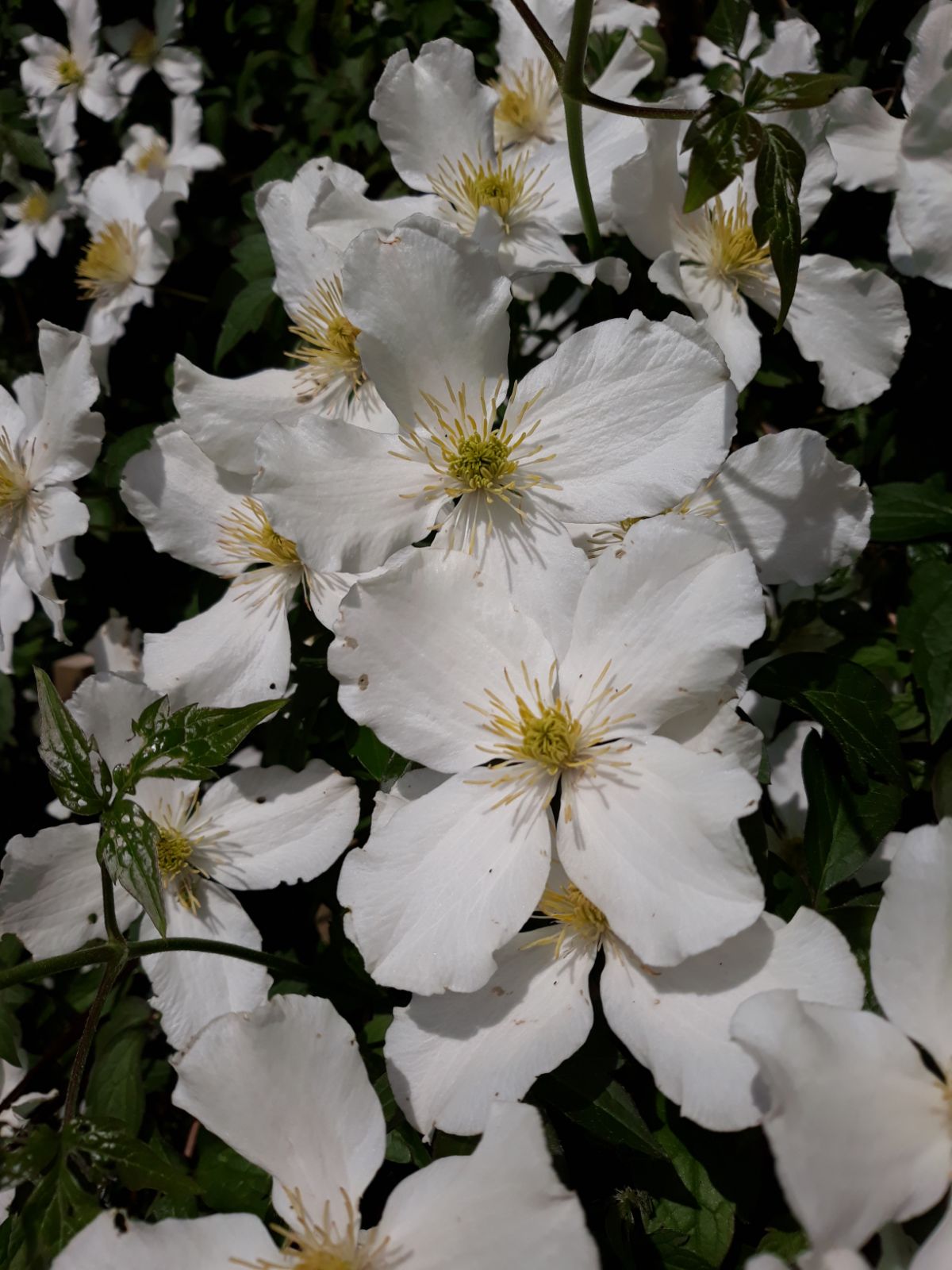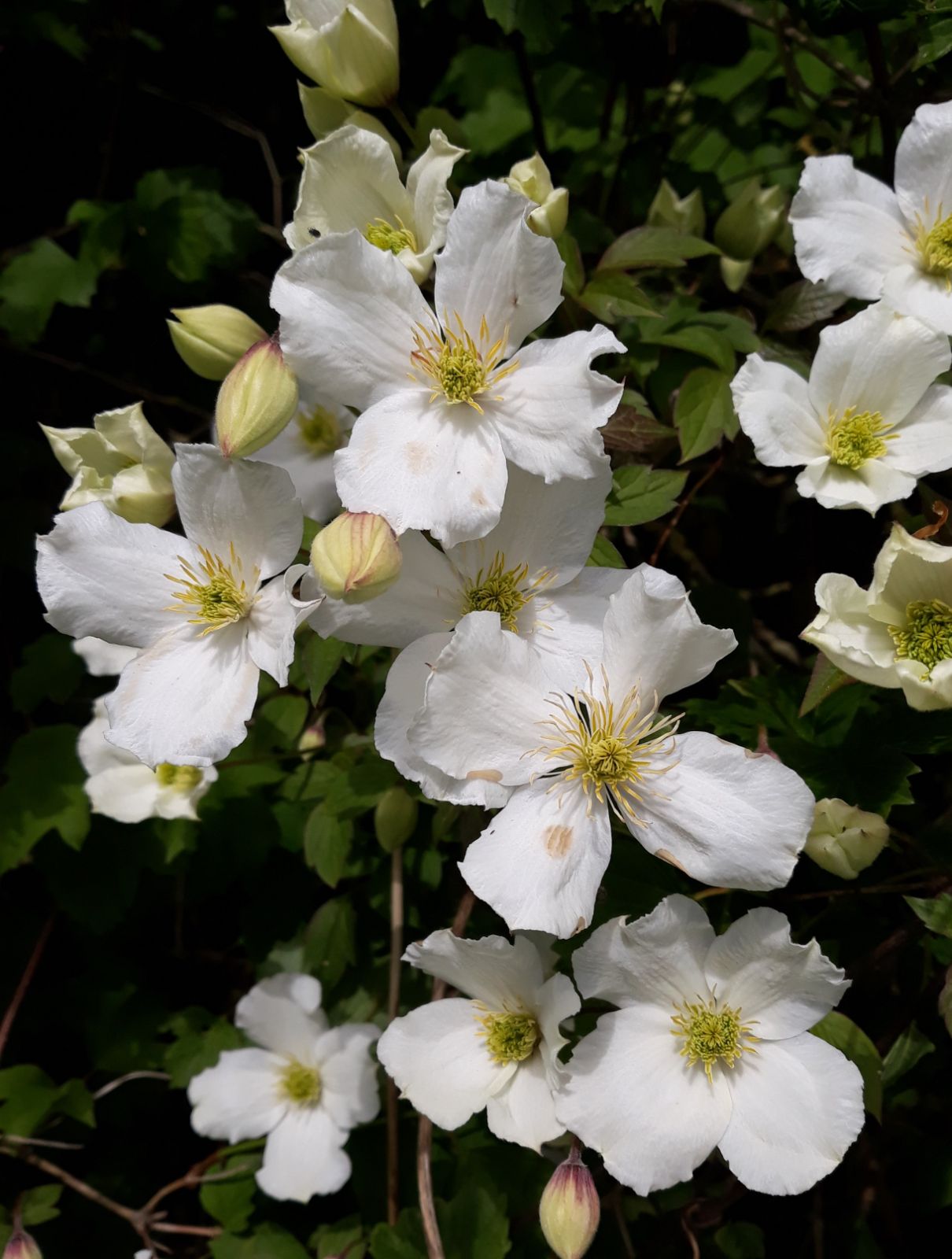Clematis montana
Credits
Article from Bean's Trees and Shrubs Hardy in the British Isles
Recommended citation
'Clematis montana' from the website Trees and Shrubs Online (treesandshrubsonline.
Genus
Infraspecifics
Other taxa in genus
- Clematis acutangula
- Clematis aethusifolia
- Clematis afoliata
- Clematis akebioides
- Clematis alpina
- Clematis apiifolia
- Clematis armandii
- Clematis × aromatica
- Clematis campaniflora
- Clematis chinensis
- Clematis chrysocoma
- Clematis cirrhosa
- Clematis connata
- Clematis crispa
- Clematis × durandii
- Clematis × eriostemon
- Clematis fargesii
- Clematis finetiana
- Clematis flammula
- Clematis florida
- Clematis fusca
- Clematis gracilifolia
- Clematis grata
- Clematis heracleifolia
- Clematis integrifolia
- Clematis × jackmanii
- Clematis × jouiniana
- Clematis lanuginosa
- Clematis lasiandra
- Clematis ligusticifolia
- Clematis macropetala
- Clematis maximowicziana
- Clematis meyeniana
- Clematis nannophylla
- Clematis napaulensis
- Clematis orientalis
- Clematis paniculata
- Clematis patens
- Clematis phlebantha
- Clematis pitcheri
- Clematis quinquefoliata
- Clematis ranunculoides
- Clematis rehderiana
- Clematis serratifolia
- Clematis songarica
- Clematis stans
- Clematis tangutica
- Clematis texensis
- Clematis tibetana
- Clematis uncinata
- Clematis × vedrariensis
- Clematis verticillaris
- Clematis viorna
- Clematis virginiana
- Clematis vitalba
- Clematis viticella
A deciduous climber of vigorous habit, growing at least 20 ft high; stems glabrous except when quite young. Leaves composed of three leaflets on a common stalk 2 to 4 in. long; the leaflets short-stalked, ovate to lanceolate, pointed, variously and unequally toothed; 1 to 4 in. long, half as wide. Flowers solitary, pure white, 2 to 21⁄2 in. across, each borne on a glabrous stalk 2 to 5 in. long. Sepals four, spreading, oval. Seed-vessel elliptical, glabrous, surmounted by a plumose style 11⁄2 in. long.
Native of the Himalaya; introduced by Lady Amherst in 1831. It is quite hardy, and is undoubtedly one of the loveliest of all climbers. The flowers appear in May, and being produced singly on long stalks, can only be confused with the white variety of C. alpina, and that is not only very different in habit and vigour, but has the petal-like parts of the flower characteristic only of the Atragene section. C. montana is a valuable plant for covering arbours, pergolas, and especially verandas, where its long shoots can be allowed to hang down and form a sort of curtain.
From the Supplement (Vol. V)
What may prove to be a new species, allied to C. montana, was introduced by Keith Rushforth in 1980 from Mount Omei in western China, under his number 164.
'Elizabeth'
Flowers fragrant, large and light pink in colour.f. grandiflora (Hook.) Rehd
Flowers larger than in the type, up to 3 in. across.


